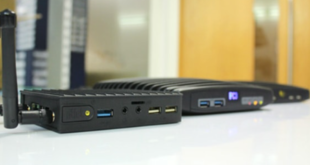Introduction to NFTs & NFT Marketplace
Non-fungible tokens, or NFTs, have just become the hottest sensation in the global crypto market. They are indeed the best and most consistent points of collision between digital art and blockchain technology. The NFT marketplaces are a technological breakthrough that is sweeping the entire cosmopolitan community.
These crypto-based NFT platforms are cited as a key nexus between digital assets and blockchain technology. With its distributed ledger technology, these non-Fungible token marketplaces give a platform for creators, artists, musicians, sports franchises, and others, to create, collect, and, more crucially, monetize. NFT marketplaces run on a variety of Blockchain platforms, including Binance, Solana, Cardano, Ethereum, TRON, and others.
What can we understand about Fungibility?
We must first grasp the concept of fungibility in order to fully comprehend non-fungible tokens. The ability of an asset to be easily replaced by its counterpart without affecting its value is known as its ability. A non-fungible token, in contrast to a fungible asset, symbolizes something distinct and irreplaceable. A non-fungible token could be used to represent anything unique, such as artwork or music.
NFT Marketplace Key Features

There are indeed front-end and back-end considerations to be considered if you want to create your own NFT marketplace. For marketplaces, NFT developers must provide a user experience that makes browsing for desirable files simple, as well as a back-end mechanism that effortlessly processes complex transactions. A few of the key features of an NFT Marketplace are:
-
-
Storefront –
-
An eCommerce site is akin to an NFT marketplace. It implies an appealing and user-friendly front-end storefront. For each file or item, the admin must determine how much information to display.
NFT buyers, like real art collectors, will want to know about the item’s authenticity. They also want a list of how rare their NFTs are. While an individual NFT cannot be copied, artists can distribute numerous NFTs of the same image.
-
-
Search –
-
You must define the scope of the files you will exchange while creating your own NFT marketplace. OpenSea, one of the first and most popular marketplaces, is a broad market that accepts any NFT. Newer marketplaces usually concentrate on a single niche. To make the buying process go faster, you’ll need a search tool for everything you post on your site.
-
-
Filters –
-
Another way to improve a buyer’s experience is to use search filters. When it comes to investing in NFTs, there are many different standards that investors hold. Users should have the ability to sort out via artists or price or rarity, etc.
For collectors with high-end tastes and values for their collections – such as those looking at rarer coins or stamps from countries around the world – these items can be incredibly valuable so you need someone who knows what they’re doing when valuing your collection!
-
-
Listings –
-
Both buyers and sellers must have a positive experience on the NFT marketplace. Well-designed NFT programming makes the process of uploading and listing files clear. The marketplace should include easy-to-follow upload instructions as well as forms for collecting sales data.
-
-
Listing Status –
-
In an NFT transaction, both parties require information on the process. If you’re selling a file, it’s important for buyers and sellers alike to know how many people have viewed your product. This way they can make an educated decision on whether their purchase was worthwhile!
The site notifies them before purchasing a file so that buyers can ensure the product has gone through an authentication process. Collectors like items that have been verified.
-
-
Buying & Auction
-
NFT engineers can integrate a variety of selling mechanisms onto your website. Popular artists usually get the best rates through timed auctions because the competition can quickly raise the price. On the other side, the back-end work for an auction is more onerous than for regular sales.
Bidding can be fierce, especially at the end of the auction, thus the site must provide real-time updates. Buying and selling directly is a more straightforward procedure. On the other hand, using smart contracts on the blockchain needs more development than traditional e-commerce payment gateways.
-
-
Wallet –
-
Tech-savvy customers are just as concerned about the security of their cryptocurrency wallets as they are about the security of any other financial data. The new NFT marketplace should allow users to use their existing crypto wallet solutions.
-
-
Ratings –
-
Both buyers and sellers can benefit from ratings. A good reputation means everything when it comes to conducting business, and people who have a great track record are more likely than others to get the contract.
Negative traits such as fraudulent representation or bailing out of a transaction before the smart contract takes effect can also be discouraged by a rating system.
Now that we’ve covered the basics and the most fundamental requirements of an NFT Marketplace, here is an insight on developing an NFT marketplace on a Blockchain platform called – Cardano.
Introduction to Cardano
Cardano is a third-generation proof of stake blockchain that uses peer-reviewed research and evidence-based approaches to ensure its security. It was created to address the issues of scalability, interoperability, and long-term viability in distributed systems. The Cardano blockchain is the first of its kind to use immutability, which protects transaction details and removes risk from false transactions on NFT marketplaces.
When it comes to transacting NFTs, the blockchain must meet specific requirements. Or at least some of them: verification, security, speed, and interchangeability. Until recently, Ethereum appeared to be sufficient in this regard. However, after the launch of Cardano, a new blockchain, Ethereum has taken a back seat.
Why Cardano? What is so special about it?
When it comes to the blockchains contending for NFT supremacy, one of Cardano’s most distinctive features is its commitment to scientific study as the foundation for platform updates and research.
Cardano is a third-generation platform that’s better than Ethereum. The Cardanians are confident that their coin has the potential to become something great. They say it was designed by experts with deep knowledge in computer science, mathematics and sought-after AI programming languages like academia did when creating bitcoin or Ethereum respectively – so they have a leg up on competitors!
Cardano claims to be the most advanced cryptocurrency on earth while still being fully compatible with both blockchains – which means users can trade one type of crypto for another without losing value due to transfer between chains unlike what happens if you move money internationally using USD instead CFDs (Contracts for Difference). Cardano’s Holy Grail, like that of most other blockchains, is to provide banking services to the world unbanked.
Tamilplay is a website that provides Tamil movies download for free. It was started in 2007 by a group of passionate Tamil movie fans. The website offers a large selection of Tamil movies, both old and new, to its users.
Despite some recent lows, Cardano’s blockchain and coin have recovered to become one of the most prominent blockchains, especially since the rise of NFTs.
Why consider developing an NFT Marketplace on Cardano Blockchain?
NFTs, and especially NFT marketplaces, have democratized the entire collectible art ecosystem. As a result, the new blockchain should make it simple for anyone to construct their own NFT and trade it without difficulty.
To create an NFT on the Cardano blockchain, you will need to have a couple of things: fundamental knowledge about how it works as well as access and ownership of your ADA wallet. Once you’ve met all the conditions, you’re ready to establish your own Cardano NFT.
NFTs are more than just art and music representatives; they’re also fascinating examples of how technology can help manage collectibles and construct identities. The Cardano blockchain is the newest kid on the block. It is specifically designed to meet these requirements.
Cardano’s typical uses are in the domains of identification and traceability management, and it includes a diverse set of native capabilities ranging from catalyst to meta-data benchmark. In short, Cardano has established itself as one of the most promising blockchains for non-financial identification and validity building.
Also Read: A Complete Guide of Home Networking Services
Why Choose Vardhaman Infotech?
We are a crew of blockchain-obsessed developers working on the design and development of high-potential revolutionary blockchain solutions, such as NFT marketplaces. We can provide you with end-to-end blockchain development services if you want to establish your own NFT Marketplace on the Cardano blockchain. Get in touch with our experts today!
 Time News Global Business, Technology, Entrepreneurship News
Time News Global Business, Technology, Entrepreneurship News




